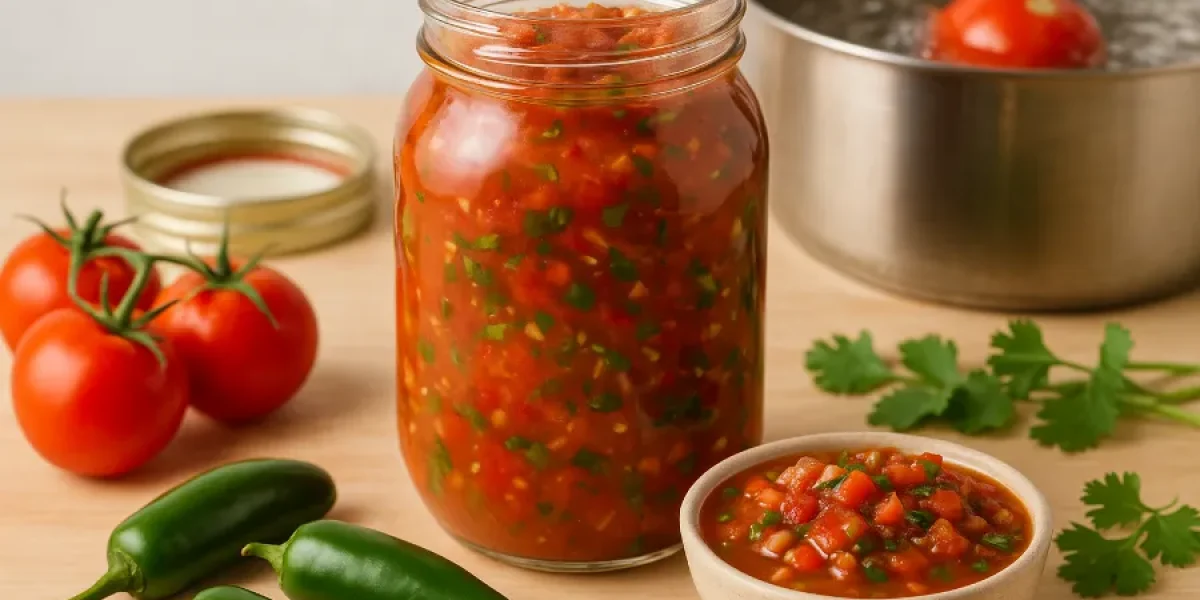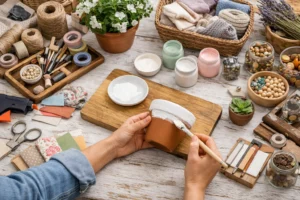I cracked open my first jar of the season last night, and that deep red, tangy aroma filled the kitchen in one breath. That moment reminded me why I love doing a homemade salsa canning recipe each year — it’s my way of bottling summer so winter doesn’t feel so long. Over the years I’ve refined my method, and in this post I’ll walk you through my process in a way that feels like we’re canning in the same kitchen.
Homemade Salsa for Canning
Every August, when I tiptoe into the garden just before sunrise, I see clusters of tomatoes glowing against green vines. To me, that means it’s time for homemade salsa for canning. I make it not just because I love salsa, but because there’s something deeply satisfying about turning sun-warmed produce into long-lasting flavor.
This is the version I trust — it’s safe, forgiving, and always yields jars I’m proud to gift or store. The balance of tang, heat, and freshness comes from respecting the ingredients and following a reliable process.
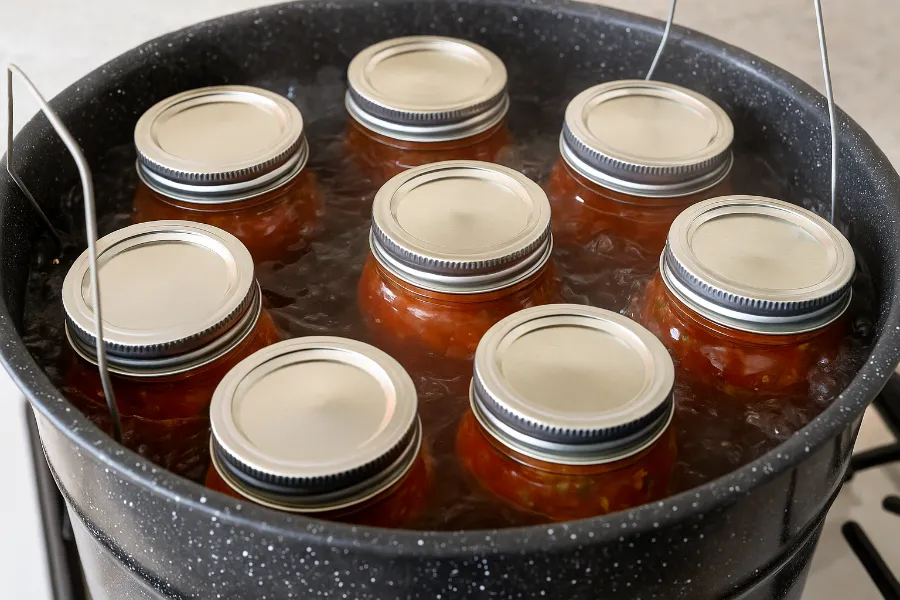
Easy Homemade Salsa Recipe
Let me break down the recipe I use most years. It’s approachable — no exotic spices, nothing that needs ten kinds of tools. It just works.
Yield: About 6 pint jars
Ingredients
- 8 cups peeled, cored, and diced plum (or Roma) tomatoes
- 2½ cups chopped onions (yellow or white)
- 1½ cups chopped green bell pepper
- 1 cup chopped jalapeño peppers (adjust for your spice tolerance)
- 3 cloves garlic, minced
- 1 cup fresh cilantro, chopped
- 1 cup apple cider vinegar (5% acidity)
- 1 tablespoon canning salt
- 1 teaspoon ground cumin
- 1 teaspoon black pepper
- 2 teaspoons sugar (optional — to mellow the acidity)
- ½ teaspoon smoked paprika (optional — adds depth)
Method
- In a heavy, non-reactive pot, combine tomatoes, onions, peppers, jalapeño, and garlic.
- Stir in vinegar, canning salt, cumin, black pepper, sugar, and smoked paprika.
- Bring to a boil, then reduce heat and simmer 10–15 minutes, stirring often so it doesn’t scorch.
- Remove from heat and stir in cilantro just before jar-filling.
- Ladle hot salsa into sterilized jars, leaving ½ inch headspace.
- Wipe rims, place lids, screw rings finger-tight, and process in a water bath (see “How Long to Water Bath Can Salsa” below).
When done correctly, this easy homemade salsa recipe strikes a perfect rhythm between bright tomato flavor and just enough heat.
How to Peel Tomatoes for Canning
One detail I never skip: how to peel tomatoes for canning. It seems like extra work until you taste the result — skins float, separate, or toughen if you skip it.
Here’s my go-to method:
- Bring a large pot of water to a rolling boil.
- Score the bottom of each tomato with a small “X.”
- Drop them in for 30–45 seconds— just until the skin loosens.
- Transfer immediately into an ice water bath (equal parts water + ice).
- The skins slip right off. Core, dice, and you’re ready to go.
If you skip this step, you risk bits of peel in every jar — not a disaster, but not the silky texture I prefer.
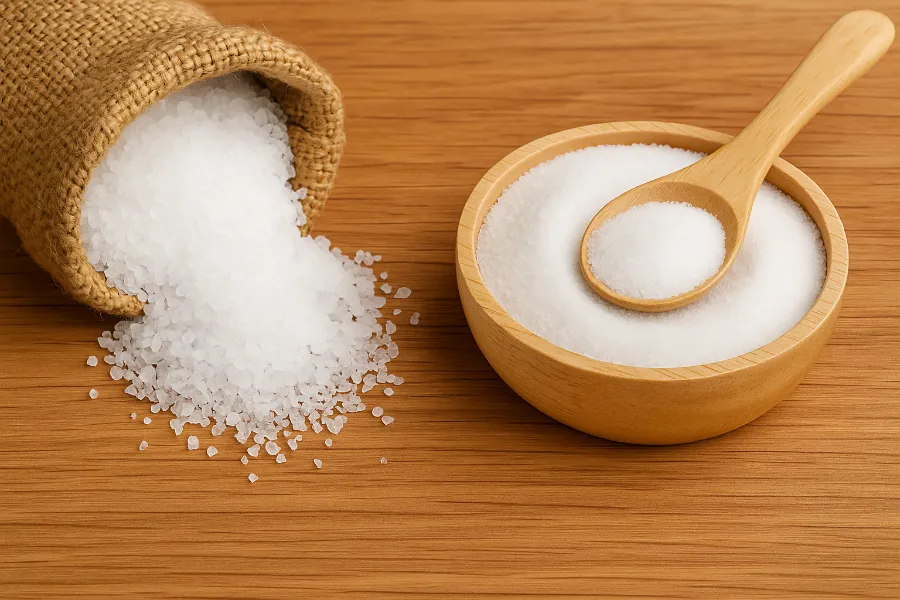
Fresh Garden Salsa
I always say that my salsa is “a snapshot of my garden.” When I pull together fresh garden salsa, I lean into what’s abundant: tomatoes, peppers, onions, herbs — all just harvested. That freshness makes a huge difference compared to buying ingredients from the store.
Because I work with what’s ripe, each year’s batch might vary slightly in sweetness, heat, or texture. But that’s part of the charm. I trust the base recipe to carry those natural variations and turn them into something consistent and flavorful.
Best Tomatoes for Canning Salsa
One of the top questions I get is: Which tomato variety is best for salsa canning? Over the years, I have favorites — and a few warnings.
For me, the best tomatoes for canning salsa are paste or plum-style tomatoes, like Roma or San Marzano. Why? They’re meatier, contain less water, and reduce more cleanly. When tomatoes are too juicy (like slicing or beefsteak varieties), your salsa can turn out watery unless you drain or simmer longer.
If your garden produces a mix of types, here’s a trick: after dicing, place them in a colander to drain 15–20 minutes before cooking. That helps keep your salsa thick and vibrant.
Canning Salt vs Regular Salt
I learned this the hard way — a batch once turned cloudy, and the flavor seemed “off.” That’s when canning salt vs regular salt became a devotion, not just a suggestion.
- Canning salt is pure sodium chloride, with no additives, anti-caking agents, or iodine. It dissolves cleanly and doesn’t interfere with flavor or clarity.
- Regular table salt often contains additives that can cloud your jars or give a subtle metallic tinge.
If you don’t have canning salt, clean kosher salt is a decent substitute — just check for no additives on the label.
How Long to Water Bath Can Salsa
This is the part where precision matters. For most home canners, water bath canning is the safe, accessible method for high-acid recipes like salsa.
My Rule:
- Process pint jars for 15 minutes once your water reaches a rolling boil.
- If you live above 3,000 feet, add 5 minutes for altitude adjustments.
Step-by-Step:
- Place filled jars in the canner on a rack, ensuring water covers them by at least 1 inch.
- Bring to a full, rolling boil before starting the timer.
- After the 15 (or 20) minutes, turn off the heat, re-cover, and let jars sit 5 minutes in the hot water.
- Remove carefully, set on a towel-lined surface, and don’t disturb them for 12–24 hours.
When you hear that soft ping as lids seal, you know you’ve done things right.
How Long Does Canned Salsa Last
One of my favorite parts: that moment when jars go up onto the pantry shelf, lined like soldiers. But how long do they stay good? The how long does canned salsa last question is crucial.
When jars are sealed and stored properly — cool, dark, and dry — salsa can last 12 to 18 months. Once you open a jar, refrigerate and use it within 7–10 days. Always check the seal (lid should not flex) and inspect for signs of spoilage before use.
If ever your salsa smells off, shows mold, or fizzes unexpectedly, don’t take chances — toss it.
My Personal Canning Story
I still remember the first time I tried preserving salsa. My jars didn’t seal, I panicked, and I learned more in those few anxious hours than in weeks of reading. Since then, I’ve refined my process. Now, canning day is joyful — a quiet ritual I look forward to.
I measure tomatoes by weight now, keep my jars warm in the oven during simmering, and always give the rims a final wipe before capping. Even so, I taste and adjust each batch. Some years I lean spicy, other years I balance more sweet. But the frame — the homemade salsa canning recipe — remains unchanged because it works.
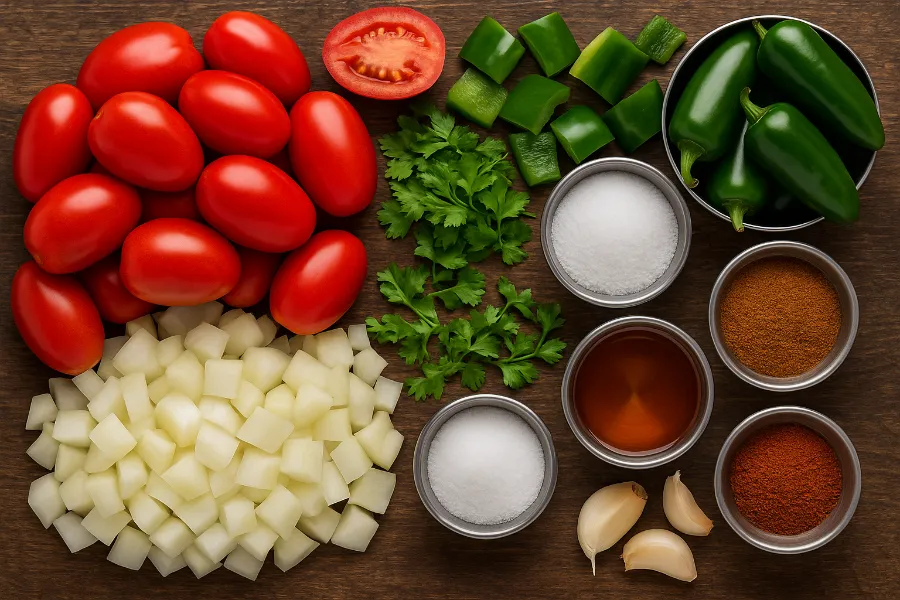
Final Thoughts
I hope this feels less like a manual and more like having a kitchen buddy walk you through a summer ritual. Preserving salsa might seem intimidating at first, but once you’ve done a few jars, it becomes part of your garden rhythm.
Every time I open a jar in the dead of winter, I remember morning light through tomato leaves, the snap of peppers, the scent of cilantro. That’s what makes homemade salsa canning recipe worth every moment.
Ready to get started? I’m cheering you on. And if you want a printable version or a simplified checklist, I’m happy to whip one up for you.
FAQs
Use a tested recipe with proper vinegar or lemon juice to ensure acidity. Always process jars in a boiling water bath for at least 15 minutes to make them shelf-stable.
Plum or Roma tomatoes are ideal because they’re thick, meaty, and have less water. This helps create a rich salsa texture that holds up beautifully after canning.
Yes, peeling tomatoes makes your salsa smoother and prevents curled skins from floating in the jar. Blanching them in boiling water for 30–45 seconds makes peeling effortless.
Properly sealed jars of homemade salsa can last 12 to 18 months in a cool, dark pantry. Once opened, refrigerate and use within 7–10 days for the best flavor.
Canning salt is pure and dissolves evenly without clouding the salsa, while regular table salt may contain additives that affect color and taste. Always use canning or kosher salt for clarity and consistency.
Pint-sized jars should be processed for 15 minutes in a boiling water bath. If you live above 3,000 feet in elevation, add an extra 5 minutes to your processing time.

